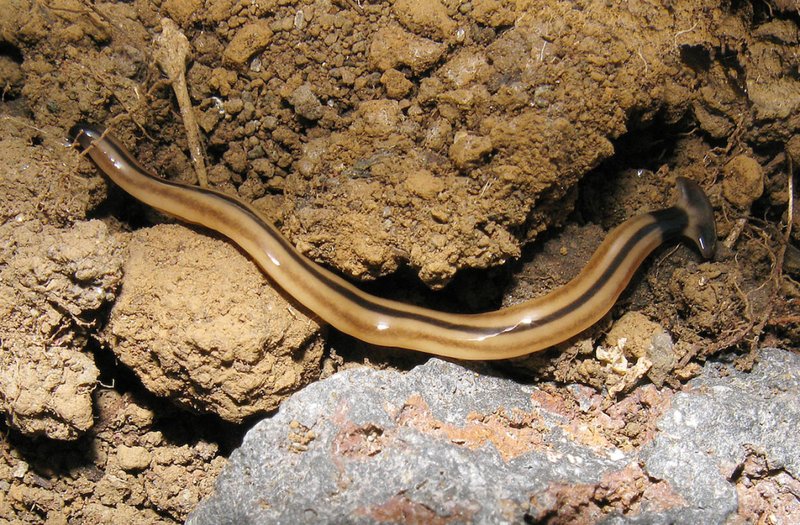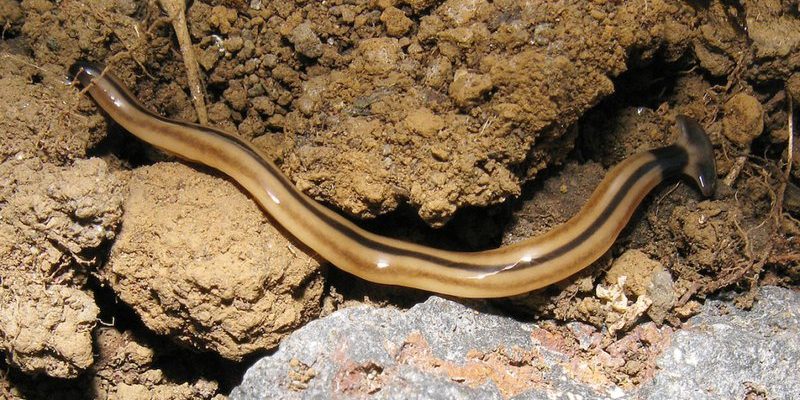
These worms, with their distinct hammer-shaped heads, might look a little bizarre but are fascinating in their own right. They’re known for their predatory nature, hunting down earthworms and other beneficial soil organisms. As they spread through soil and mulch, the impact on our gardens can be significant. Here’s what you need to know to keep your garden healthy and free from these invaders.
What Are Hammerhead Worms?
Hammerhead worms belong to the **Bipalium** genus and are known for their unique appearance and size—some can grow up to a foot long. They have a flat, ribbon-like body and a head that resembles a hammer, which is where they get their name. These worms are primarily nocturnal and often come out during the night to hunt.
You might be wondering, why should this matter to gardeners? Well, these worms are **predators** that particularly enjoy feasting on earthworms, which play a crucial role in helping our gardens thrive. Think of earthworms as nature’s little gardeners; they aerate the soil and help with nutrient cycling. When hammerhead worms invade, they threaten this delicate balance.
Another important fact is that hammerhead worms can reproduce quickly. They’re hermaphrodites, meaning each individual has both male and female reproductive organs. This makes it easier for them to multiply. If just a few make their way into your garden, they can quickly become a larger problem.
How Do Hammerhead Worms Spread?
The spread of hammerhead worms often occurs through the trade of soil and mulch. Many people don’t know that these critters can hitch a ride in the very products we use to enrich our gardens. When purchasing mulch, soil, or compost, it’s common to bring home unintentional guests.
**Here’s the thing:** even if you don’t see hammerhead worms in the mulch you bought, they could still be there, hiding out of sight. Because these worms are good at blending into their environment, they can often go unnoticed until damage has been done.
Another way they spread is through plant cuttings or divisions. If you share plants with friends or get new houseplants, hammerhead worms can travel along with the soil attached to the roots. So, next time you’re swapping plants, keep an eye on the soil too!
Why Hammerhead Worms Are Problematic
Now that we understand how they spread, let’s chat about why hammerhead worms are a problem for gardeners. First and foremost, they are **predators** that could wipe out the earthworm population in your garden. Since earthworms contribute significantly to soil health, their decline can lead to several problems:
- Soil Compaction: Without earthworms to aerate the soil, it can become compact and less fertile.
- Pest Problems: A lack of these beneficial organisms can lead to increased pest populations that harm your plants.
- Nutrient Cycling: Earthworms help break down organic material, which enriches the soil. A decline in their numbers can disrupt this process.
In addition to these ecological concerns, hammerhead worms can also pose a risk to certain native species. They’re not just a problem for gardeners but can affect local wildlife by predating on beneficial organisms. This could upset the natural food chain and have long-lasting effects on local biodiversity.
Identifying Hammerhead Worms
Identifying hammerhead worms is key to managing their presence in your garden. These worms have a **flattened body** that tapers to a point at the tail and flares out to a hammer shape at the head. Their colors can vary, with some appearing in shades of brown, gray, or even orange.
To help you spot them, here are some tips:
- Shape: Look for that distinctive hammer shape at the front.
- Size: They can range from a few inches to over a foot long.
- Movement: They glide smoothly over the soil and can be seen moving at night.
If you think you’ve spotted a hammerhead worm, it’s important to remove it as soon as possible. Use gloves to handle them, as they can excrete a mucus that may cause skin irritation.
Preventing Hammerhead Worms in Your Garden
Preventing the spread of hammerhead worms starts with being strategic about what you bring into your garden. Here are a few tips to keep these invaders at bay:
- Buy Local: Purchase mulch and soil from reputable local suppliers who can guarantee that their products are free from hammerhead worms.
- Inspect Products: Before bringing home mulch or soil, inspect it for any unusual creatures.
- Compost Wisely: If you’re making your own compost, be careful about what you include in it—especially if you use yard waste from other areas.
It’s also a good idea to educate fellow gardeners about the risks hammerhead worms pose. Share your knowledge with friends and community members to help raise awareness.
Dealing with Infestations
If you discover that your garden has been invaded by hammerhead worms, don’t panic. There are ways to manage the problem. Here’s what you can do:
- Manual Removal: Use gloves to remove the worms—you can cut them in half, but be aware that they can regenerate.
- Apply Salt: Some gardeners have found that sprinkling salt can deter them, but be cautious as this can affect soil health.
- Encourage Natural Predators: Birds and other wildlife can help control worm populations, so consider planting native species that attract these animals.
The key here is persistence. You may not get rid of them all at once, but with diligence, you can minimize their impact.
So, there you have it—hammerhead worms might seem like just another garden oddity, but they have real consequences when they hitch a ride into our yards through soil and mulch trade. Understanding how they spread, identifying them, and knowing how to prevent or manage infestations can protect your garden’s health.
As gardeners, we have a responsibility to keep our spaces thriving, not just for our plants but for the local ecosystem as well. By being vigilant and spreading awareness, we can ensure that our gardens remain healthy and free from these strange invaders. Happy gardening!

